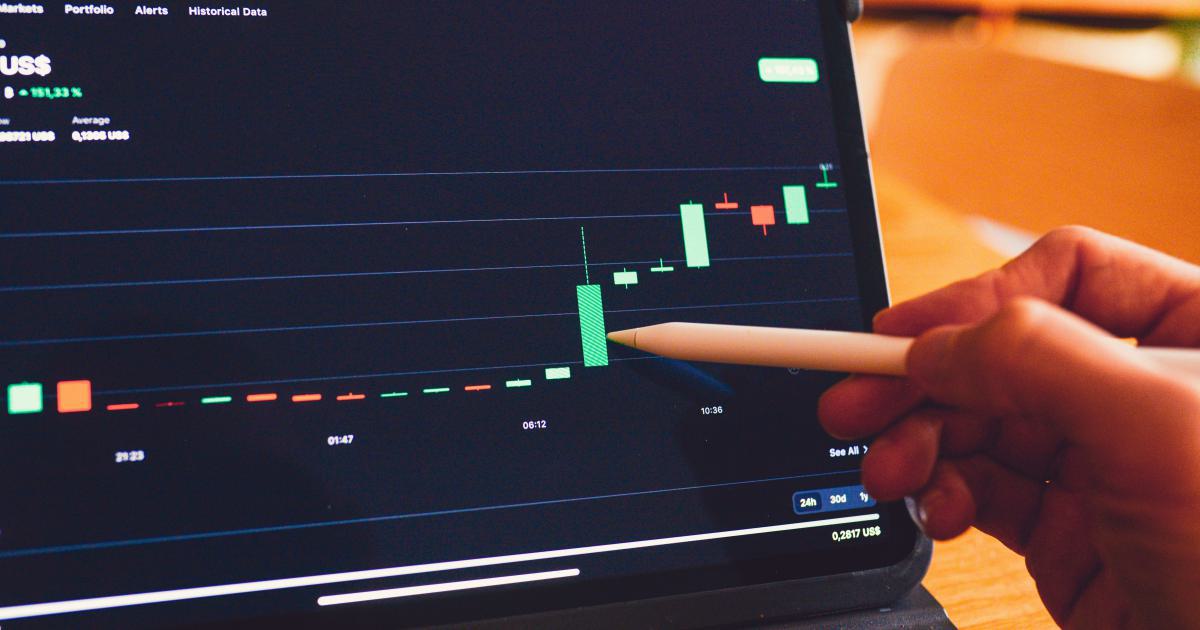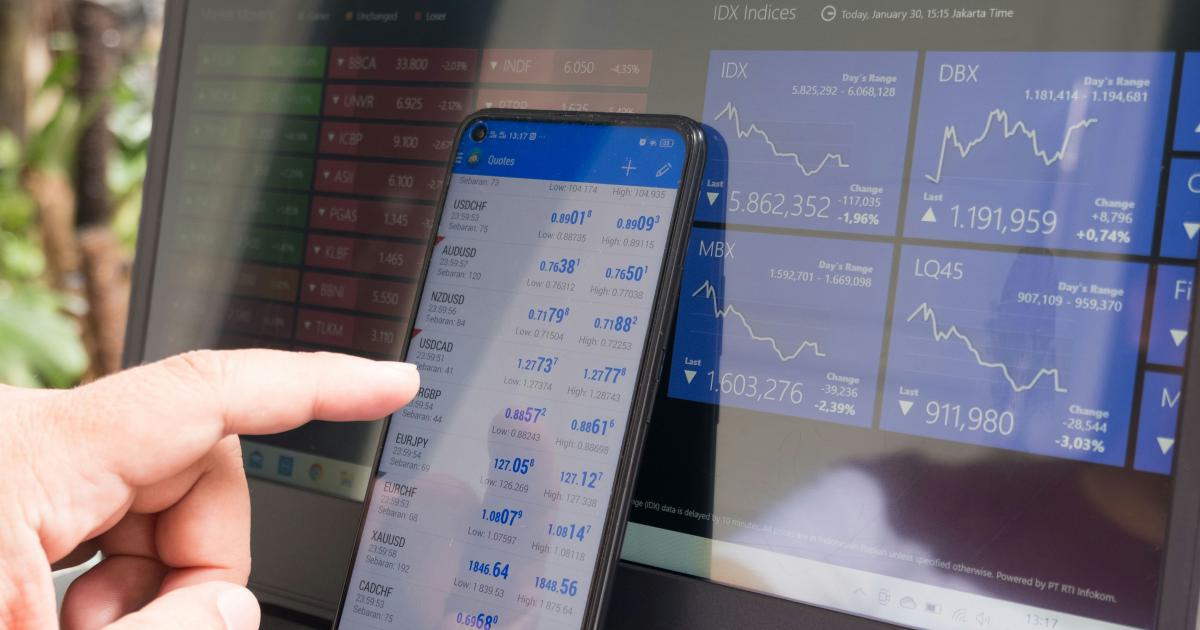Utilizing Central Bank Event Analysis in Forex Trading

Central bank event analysis in forex trading is a critical component that traders use to predict market movements, manage risk, and capitalize on opportunities created by monetary policy shifts. In the volatile world of foreign exchange, understanding central bank decisions can mean the difference between profit and loss. This article explores the nuances of analyzing central bank events, providing comprehensive insights into how these occurrences affect forex markets, the associated economic indicators, and actionable strategies that traders can employ for effective decision-making.
Understanding Central Bank Events
Central bank events encompass a variety of activities that directly influence a nation’s monetary policy. These events include interest rate decisions, policy statement releases, quantitative easing measures, and speeches by central bank officials. The core elements of central bank event analysis in forex trading revolve around deciphering the implications of these events on currency strength and market volatility.
What Are Central Bank Events?
Central bank events can be defined as publicly announced decisions or statements made by a nation's primary monetary authority, such as the Federal Reserve (Fed) in the United States, the European Central Bank (ECB) in Europe, or other similar institutions around the world. These events include interest rate announcements, policy guidance, economic projections, and unforeseen declarations regarding economic stability. Each event provides clues about the central bank's assessment of the economy and its future policy direction.
Central banks use these events to communicate their expectations regarding inflation, employment levels, and economic growth. When a central bank signals changes in its policies, it can prompt significant reactions in the forex market. For instance, a surprise increase in interest rates generally leads to an appreciation of the corresponding currency as investors seek higher returns. Conversely, a rate cut might result in depreciation.
The analysis involves digesting detailed policy statements, scrutinizing the language used, and placing these communications within the broader economic context. Traders must also consider geopolitical influences, unexpected global events, and domestic economic data to fully appreciate the impact of central bank decisions.
The Role of Monetary Policy
At the heart of central bank events is monetary policy—a tool used by central banks to control money supply, manage inflation, and maintain economic stability. Monetary policy decisions, such as adjustments in the interest rate, directly influence liquidity and investment flows in the forex market.
For example, when a central bank lowers interest rates, it may stimulate economic growth by making borrowing cheaper, thereby increasing liquidity in the economy. However, this can also weaken the currency as lower rates may reduce demand for that particular currency. Conversely, increasing interest rates can bolster a currency’s value by attracting foreign capital seeking better returns, but it might also slow economic growth if borrowing becomes too expensive.
How Central Bank Signals Influence Forex Trading
Traders engage in central bank event analysis to decode these signals and anticipate market moves. A careful examination of the language in policy statements and speeches can reveal subtle hints about future actions such as:
- Adjustments to the interest rate based on inflation forecasts.
- Potential changes in quantitative easing programs.
- Shifts in communication strategies aimed at tempering market expectations.
By analyzing these signals, forex traders can predict short-term market volatility and adjust their positions accordingly. The timing and pace of these policy changes are critical, and even minor deviations in language or pace can lead to substantial shifts in market sentiment.
Central bank event analysis thus serves not only as a forecasting tool but also as a risk management mechanism. Traders can mitigate adverse price movements by setting appropriate stop-loss orders and rebalancing portfolios based on anticipated central bank actions.

The Impact of Central Bank Decisions on Forex Markets
Central bank decisions are among the most significant drivers of forex market volatility. The periods surrounding central bank announcements often witness turbulent trading conditions, high liquidity, and rapid price movements. The correlation between central bank decisions and currency fluctuations is a well-documented phenomenon that traders take advantage of continuously.
Currency Appreciation and Depreciation
One of the primary effects of central bank events is the fluctuation in currency values. When a central bank indicates that it will raise rates to curb inflation, the currency often appreciates, as investors tend to flock to assets that yield higher returns. For example, during past Federal Reserve rate hikes, the U.S. dollar has shown a strong upward trend. Conversely, when the market anticipates a rate reduction or sees signals of economic softness, the currency tends to weaken.
These currency movements can be abrupt and significant, underscoring the importance of being prepared for sudden market changes. Forex traders who are attuned to central bank signals can better position themselves to handle the inherent volatility, whether by hedging risk or by rapidly adjusting their positions.
Volatility and Market Sentiment
Another crucial aspect is the impact on market sentiment. Central bank communications help shape trader perceptions about the future state of an economy. When sentiment is bullish, and expectations lean towards tighter monetary policies, the currency is generally stronger. In contrast, a bearish outlook, governed by expectations of looser policy, often precipitates sell-offs in the forex market.
It is vital for traders to monitor news releases, policy statements, and the minutes of policy meetings to gauge the sentiment. Sophisticated trading platforms now offer sentiment analysis tools that incorporate social media trends, news analytics, and historical data to provide real-time insights into market mood.
Interest Rate Differentials
Central bank decisions also affect interest rate differentials—a key determinant of forex trading. The difference in interest rates between two countries significantly influences the carry trade, where investors borrow in low interest rate currencies to invest in higher-yielding ones. Strategic central bank event analysis helps traders understand potential shifts in these differentials, allowing them to make informed trading decisions based on anticipated changes in carry trade dynamics.
For instance, if the U.S. Federal Reserve indicates a future rate hike while other major central banks signal caution, traders might expect a widening interest rate differential, favoring the dollar over its counterparts. Understanding these nuances allows market participants to better predict forex trends and factor in the expected movements before they occur.
Economic Indicators and Central Bank Signals
The interplay between economic indicators and central bank decisions cannot be overstated. At times, central banks adjust their policies based on real-time economic data, such as GDP growth, unemployment rates, and consumer spending. Traders must therefore not only analyze the central bank's words but also monitor broader economic indicators to form a complete view of what might happen next.
Key Economic Indicators in Central Bank Event Analysis
Understanding and monitoring key economic indicators is an essential step in central bank event analysis for forex trading. These indicators provide the foundational data that central banks rely on to shape their policies and help traders interpret the implications of any changes.
Inflation Rates
Inflation is one of the foremost indicators impacting central bank policy decisions. When inflation rises above expected levels, central banks may respond by increasing interest rates to cool the economy. Conversely, if inflation is too low, they might lower rates to spur growth. Forex traders watch inflation reports closely, as deviations from expectations can lead to immediate market reactions.
For instance, if an inflation report indicates a higher-than-expected rate of consumer price increases, traders might predict that the central bank will implement tightening measures, causing the local currency to appreciate. By analyzing inflation trends alongside central bank statements, traders can make better-informed guesses about the direction of future market movements.
Employment Data
Employment statistics, such as the non-farm payrolls in the United States or the unemployment rate in the European Union, are critical indicators that influence central bank decisions. High employment figures typically signal a healthy economy, which may lead to tighter monetary policy to control inflation. On the other hand, increasing unemployment might prompt a central bank to stimulate the economy by lowering interest rates.
The timing of employment data releases is crucial. Traders often adjust their strategies based on anticipated figures and may use complex models to forecast potential outcomes. Understanding the relationship between employment data and central bank policy can provide an edge in predicting market trends and potential turning points in the forex market.
GDP Growth
Gross Domestic Product (GDP) is a broad measure of a country’s overall economic performance. When GDP growth is robust, central banks might tighten monetary policy to prevent the economy from overheating. In periods of slow growth, central banks may ease policy to revitalize economic activity.
Forex traders track quarterly and annual GDP figures closely. A stronger-than-expected GDP reading may signal that a central bank will lean towards contractionary measures, while a weaker reading might indicate future monetary easing. By incorporating GDP analysis into their strategies, forex traders can better anticipate market trends and adjust their positions based on the anticipated monetary policy stance.
Consumer Confidence and Spending
Consumer confidence indices and retail sales figures offer insights into how economically secure individuals feel and their willingness to spend. High consumer confidence can drive increased spending, contributing to economic growth but also potentially leading to higher inflation. Central banks monitor these indicators to determine whether to modify their policy stance.
For example, a surge in consumer spending might prompt a central bank to raise rates proactively. Forex traders can use such insights to predict short-term currency movements, aligning their trading strategies with the expected central bank reaction. Often, sentiment indicators complement hard economic data in central bank event analysis, reinforcing the broader implications of policy changes.
Integrating Economic Data into Forex Trading Strategies
To effectively incorporate economic indicators into their trading strategies, forex traders develop comprehensive analytical frameworks. These frameworks blend quantitative models with qualitative insights to form a cohesive view of market trends. Factors such as seasonality, historical precedent, and inter-market correlations are integrated into these models, which help traders visualize potential outcomes of central bank decisions.
A robust strategy might involve:
- Regularly reviewing central bank statements alongside key economic reports.
- Utilizing economic calendars to track critical data releases.
- Running scenario analyses to see how different data outcomes might impact the market.
- Adjusting risk exposure in anticipation of policy shifts based on economic trends.
By leveraging these analytical techniques, traders can position themselves more advantageously in anticipation of central bank interventions.

Real-World Examples and Case Studies
Delving into historical events provides invaluable insights into how central bank actions have influenced forex markets. Let’s consider a few illustrative case studies that highlight the practical application of central bank event analysis in forex trading.
The Federal Reserve and the U.S. Dollar
One of the most significant examples in recent history is the impact of the U.S. Federal Reserve’s policy decisions on the dollar. During periods when the Fed indicated a tightening of monetary policy, the dollar experienced marked appreciation against other major currencies. For instance, during the rate hike cycles in the mid-2000s and again in the early 2010s, traders who anticipated these moves profited significantly by positioning themselves in favor of a stronger dollar.
Analysts noted that the Fed’s forward guidance, the language used in subsequent policy statements, and even the press conferences held after the meetings were critical in shaping market reactions. Traders who effectively interpreted these signals managed to capture gains and mitigate risks during periods of increased volatility. This case underscores the importance of both quantitative data and nuanced interpretation in central bank event analysis.
The European Central Bank's Quantitative Easing
In contrast, the European Central Bank’s approach to quantitative easing (QE) provides a different perspective. In the aftermath of the Eurozone debt crisis, the ECB initiated an extensive QE program designed to stimulate the economy. Despite initial market skepticism, the program eventually led to significant changes in currency valuations. The euro depreciated as the market reacted to the influx of liquidity and the prospect of prolonged low interest rates.
Traders who anticipated the ECB’s strategy were able to position themselves accordingly, sometimes employing hedging strategies to offset the increased risk. This example highlights the complexity of central bank event analysis, demonstrating that it is not just about interpreting one variable but rather about synthesizing multiple sources of information to forecast market movements.
The Bank of Japan and Its Policy Maneuvers
Another notable case is the Bank of Japan (BoJ) and its long-standing policy of maintaining low interest rates while engaging in asset purchases. The BoJ’s policies have often been a source of volatility in the forex market, particularly when unexpected deviations occur. For example, a subtle change in language during policy announcements has, at times, led to sharp movements in the Japanese yen.
Traders invest considerable time in dissecting BoJ press releases and meeting minutes to spot any hints of changes, however marginal. These detailed analyses help traders adjust their forex positions in a timely manner, illustrating the critical role that central bank event analysis plays in navigating the complex interplay between monetary policy and market sentiment.
Step-by-Step Strategies for Utilizing Central Bank Event Analysis
Implementing an effective strategy for central bank event analysis in forex trading requires a systematic approach. Below are detailed, actionable steps that traders can follow to integrate central bank insights into their trading strategies.
Step 1: Comprehensive Research and Data Collection
The first step is to gather as much relevant data as possible. This includes:
- Reviewing historical central bank decisions.
- Keeping abreast of upcoming meetings and scheduled announcements on economic calendars.
- Analyzing trends in interest rate changes, inflation data, and other economic indicators.
Invest time in understanding not just what the central bank is saying, but the context behind their decisions. Utilize reputable sources such as central bank websites, government economic reports, and financial news outlets.
Step 2: Developing an Analytical Framework
With the collected data, create a robust analytical framework that includes:
- Quantitative models to estimate the likely impact of different policy decisions.
- Qualitative analysis to understand the tone and language of policy communications.
- Scenario analysis techniques to prepare for various outcomes.
This framework will serve as the foundation for your trading decisions and help you differentiate between noise and actionable signals within central bank communications.
Step 3: Integrating Technical and Fundamental Analysis
Central bank event analysis should not be conducted in isolation. Utilize it in conjunction with traditional technical and fundamental analysis:
- Use chart patterns and technical indicators to time entry and exit points based on predicted market shifts.
- Integrate your fundamental analysis, including economic indicators and geopolitical factors, to build a comprehensive view of the market.
The convergence of signals from both technical and fundamental domains often enhances the reliability of your predictions, ensuring that your forex strategies are well-informed and robust.
Step 4: Risk Management and Position Sizing
Given the high volatility around central bank events, risk management is crucial. Develop a risk management plan that includes:
- Appropriate position sizing to limit exposure to sudden market moves.
- Stop-loss orders and take-profit levels based on anticipated volatility.
- Hedging strategies to safeguard against adverse market movements, especially during periods of extreme uncertainty.
Mindful risk management ensures that even when trades do not proceed as anticipated, the impact on your overall portfolio remains controlled.
Step 5: Continuous Learning and Adaptation
Forex trading is a dynamic field, and central bank policies evolve over time. Stay updated with new market developments, refine your analytical models regularly, and learn from past trading experiences. Participate in webinars, subscribe to expert analyses, and join trading communities to exchange ideas and insights.
Adapting to new information and altering your strategies based on both successes and failures is crucial. This continuous feedback loop will help refine your understanding of central bank event analysis and improve your overall trading performance.

Best Practices and Pitfalls in Central Bank Event Analysis
While central bank event analysis can offer significant advantages, it is not without its challenges. Understanding best practices and being cautious of common pitfalls will help traders maximize the benefits of this analytical method.
Best Practices
Timely Information:
- Ensure you have access to real-time data and news updates.
- Use reliable economic calendars to keep track of central bank meetings and announcements.
Diversify Your Sources:
- Do not rely solely on one form of media or data; cross-reference information from multiple credible sources.
- Utilize both qualitative narratives from central bank communications and quantitative data from economic reports.
Maintain Flexibility:
- Be prepared to update your trading plan as new data emerges.
- Understand that central bank policies can be fluid, and reacting quickly to changes is essential for risk management.
Combine Analysis Techniques:
- Use a blend of fundamental analysis, technical charting, and sentiment analysis for a well-rounded perspective.
- An integrated approach tends to yield more reliable predictions than focusing on a single method.
Common Pitfalls to Avoid
Over-Reliance on Headlines:
- Sometimes, headlines and initial reactions can be misleading or overly simplistic.
- Look deeper into the content of the central bank's communications rather than taking superficial interpretations at face value.
Ignoring Global Interdependencies:
- Currency markets are interconnected. A policy change in one country might spark movements in seemingly unrelated currencies due to global interconnectedness.
- Always consider the broader geopolitical and economic environment.
Failure to Adjust Risk Management:
- The volatility associated with central bank events means that rigid risk management strategies can be disastrous.
- Regularly re-assess your stop-loss and take-profit levels to ensure they align with changing market conditions.
Emotional Trading:
- Forex trading, especially around central bank events, can be emotionally charged.
- Using systematic analysis and adhering to your trading plan helps mitigate impulsive decisions driven by market panic or overconfidence.
Tools and Resources for Central Bank Event Analysis
In today’s digital era, traders have access to a wide array of tools and resources that enhance central bank event analysis. Technological advancements have led to the development of sophisticated platforms that combine real-time data, advanced charting, and analytical algorithms to provide comprehensive insights into monetary policy impacts.
Economic Calendars and News Aggregators
Maintaining an up-to-date economic calendar is essential. Websites like Forex Factory, Investing.com, and DailyFX provide detailed schedules that include the dates and times of central bank announcements, economic data releases, and related events. These calendars allow traders to plan ahead, adjust their strategies, and set alerts for major events.
News aggregators also play a crucial role by compiling the latest updates from multiple sources. This ensures that traders have immediate access to breaking news, policy updates, and expert opinions—information that is critical when trading in fast-moving markets.
Analytical Software and Trading Platforms
Many trading platforms now offer integrated analysis tools that allow traders to overlay economic indicators on price charts. Software solutions such as MetaTrader, TradingView, and NinjaTrader provide the functionality to set alerts, run backtests, and simulate different policy scenarios. These platforms help traders identify potential entry and exit points during times of high volatility following central bank announcements.
Sentiment Analysis Tools
Sentiment analysis tools are increasingly popular among forex traders. These applications analyze social media chatter, news headlines, and market surveys to gauge overall market sentiment. By incorporating sentiment data into central bank event analysis, traders can better understand the collective mood of the market and anticipate short-term volatility.
Educational Resources and Community Forums
In addition to technological tools, educational resources play a vital role in refining central bank event analysis strategies. Many brokers and financial institutions offer webinars, white papers, and online courses that dive deep into monetary policy analysis and its impact on forex markets. Furthermore, community forums and trading groups provide platforms where traders can share insights, discuss emerging trends, and obtain feedback on their strategies.
Integrating Central Bank Event Analysis into a Holistic Trading Strategy
The principles of central bank event analysis are most effective when combined with a holistic trading strategy that incorporates multiple analytical frameworks. It is not effective to rely solely on one form of analysis; instead, it should complement other strategies to maximize overall profitability.
Combining Fundamental and Technical Analysis
A balanced trading strategy involves using both fundamental indicators—such as interest rate differentials, economic data, and central bank communications—and technical analysis tools like trend lines, moving averages, and support/resistance levels. The confluence of signals from both approaches often leads to stronger confirmation of trade setups, allowing for more successful entry and exit points.
Traders who integrate central bank event analysis with other methods can benefit from:
- Enhanced trade timing, particularly around periods of major economic announcements.
- Improved risk-reward ratios as technical analysis can help pinpoint exact levels for stop-loss and take-profit.
- Reduced uncertainty by cross-verifying central bank signals with technical chart patterns.
Developing a Robust Risk Management Framework
Nothing is more critical than managing risk effectively, especially during periods characterized by central bank activity. A well-thought-out risk management framework should include:
- Detailed stop-loss strategies that account for expected volatility during central bank events.
- Position sizing that limits exposure while allowing for potential gains.
- Diversification of trades to avoid overexposure in any single currency pair.
Furthermore, scenario planning can assist in anticipating different market outcomes. Incorporate techniques such as Monte Carlo simulations and stress testing to see how your trading portfolio might respond under various central bank policy scenarios.
Analyzing and Adjusting Strategies Post-Event
After a central bank event, it is essential to analyze market reactions and adjust strategies accordingly. This includes:
- Reviewing price charts to assess volatility patterns and retracement levels.
- Re-evaluating your analytical models in light of any discrepancies between anticipated and actual outcomes.
- Documenting lessons learned to improve future decision-making processes.
This iterative approach ensures that your trading strategy evolves with the market, continually integrating refined insights from central bank event analysis with on-the-ground market behavior.
Conclusion
Central bank event analysis in forex trading is a powerful tool that, when utilized correctly, offers traders the foresight needed to navigate volatile markets. From understanding the underlying mechanics of monetary policy to analyzing realistic outcomes through comprehensive frameworks, this approach integrates both quantitative and qualitative elements to provide a robust strategy for forex trading.
By carefully monitoring economic indicators such as inflation, employment data, GDP growth, and consumer sentiment, and by combining these insights with technical analysis and sound risk management practices, traders can position themselves to take advantage of market opportunities while mitigating risks. The balance of these components is crucial for long-term success.
Real-world case studies, from the impactful policy shifts by the U.S. Federal Reserve to the nuanced strategies employed by the European Central Bank and the Bank of Japan, illustrate the practical benefits of detailed central bank event analysis. With continuous learning, adaptation, and proper utilization of advanced analytical tools, forex traders have an edge in anticipating market trends and making informed trading decisions.
The interplay between central bank communications and market responses underscores the dynamic nature of modern forex trading. As monetary policies evolve, so too must the strategies of those navigating these turbulent waters. By integrating central bank event analysis into a comprehensive trading plan, traders not only refine their market predictions but also build resilience against unexpected shifts, ensuring a systematic, evidence-based approach to managing forex portfolios.
In conclusion, central bank event analysis is not just about reacting to policy announcements after they occur; it’s about anticipating the ripple effects throughout the forex landscape. With diligent research, the proper analytical framework, and a commitment to continuous refinement, traders can harness this formidable tool to enhance both profitability and risk management in the ever-changing world of forex trading.
Unleash the Power of Automated Trading Analysis
Are you struggling to keep up with the fast-paced trading world? TrendSpider empowers you with cutting-edge tools for optimal strategy execution.
Our automated technical analysis suite eliminates guesswork, backtests strategies, and delivers real-time alerts, saving you valuable time and effort.
Annika Eriksson
55 posts written





